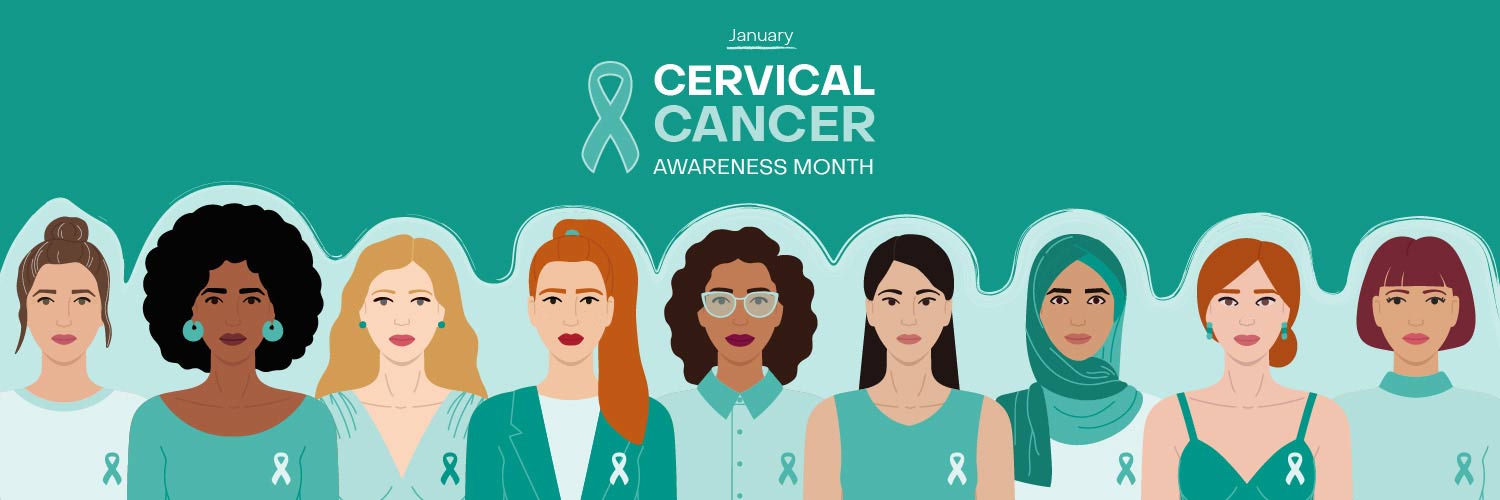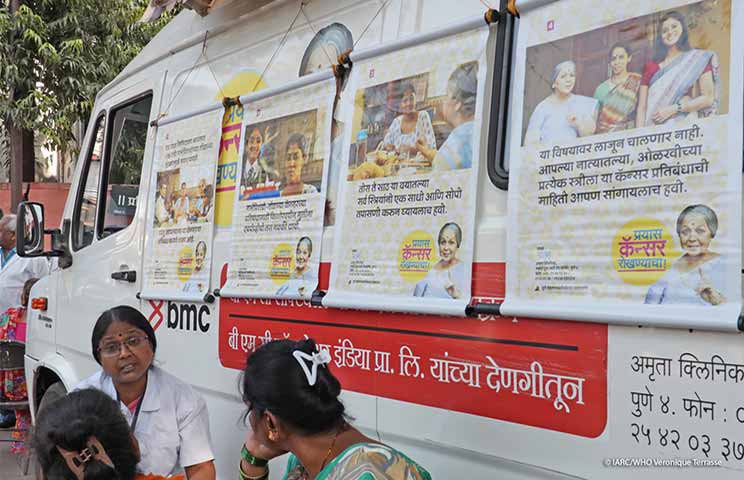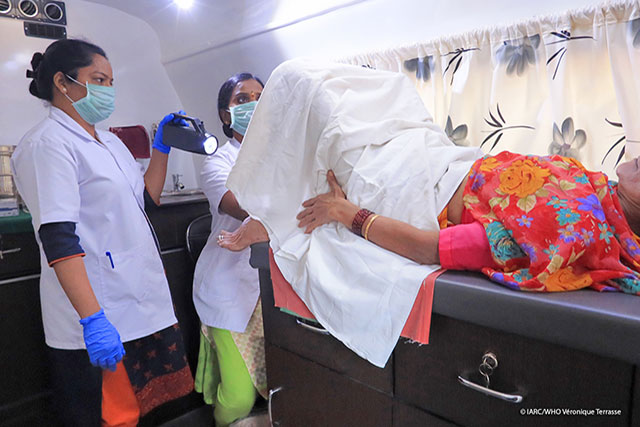Cervical cancer is a significant public health concern in India, although it is fully preventable with vaccination of adolescent girls against human papillomavirus (HPV) and detection and treatment of precancer in adult women. In 2023, the disease killed nearly 80 000 women, making it the third most common cause of cancer deaths in the country. The HPV vaccine is yet to be introduced in the national immunization programme. Cervical cancer prevention in India through screening is challenging, with significant gaps in both access and awareness. The latest family health survey showed that less than 3% of adult women in India have ever been screened.
Front-line health workers are often the first point of contact for women, providing essential information and guidance. This is particularly important in areas with limited access to health facilities and low awareness, such as in the urban slums on the outskirts of Pune, a fast-growing city in western India’s Maharashtra state, 150 km south of Mumbai.
Health workers like Mufid Baig, a counsellor, Seema Kand, a senior nurse, and others like Payal and Pratibha, with a local nongovernmental organization called Prayas, play a critical role in raising awareness and encouraging women to get screened, diagnosed, and treated before cancer develops. Three times a week, Seema and her colleagues reach out to women in urban slums and remote villages around Pune in their mobile screening unit, offering free cervical cancer screening to a population that would otherwise have limited access to these services. Initially targeting women living with HIV at the anti-retroviral therapy (ART) clinics, the project, called the Cervix Project, has expanded to include all women, particularly those from lower socioeconomic backgrounds.
About 50–80 local women, who have been informed about the health workers’ visit by community partners, gather around the mobile screening unit. They receive information from the counsellors about cervical cancer screening, while nurses collect the samples for the HPV test inside the mobile screening unit. This test detects the presence of high-risk types of HPV, which are responsible for most cases of cervical cancer. The test involves collecting a sample of cells from the cervix, in a procedure similar to a Pap smear.
“It can be challenging to convince women to get screened. There is a lack of awareness about cervical cancer in general. They are asymptomatic and don’t always understand the need to get tested,” explains Seema. “Some of them become very anxious if the test result is positive, thinking that they already have cancer. We spend a lot of time reassuring them and explaining the next steps.”
Women who test positive for HPV are referred to the Prayas clinic, where they can receive a colposcopy, which is a detailed cervical examination using a magnifying instrument to identify abnormal areas. If any abnormal areas are detected, the health-care provider may take a biopsy for further diagnosis and the women are treated for cervical precancer with thermal ablation or excision following the World Health Organization (WHO) guidelines. Women with confirmed cancer are referred to a cancer hospital.
For Dr Pritam Chaudhari, a clinician and the coordinator of the project, follow-up is crucial. “Most of the women are daily workers, and they often live far from the clinic. We really have to ensure that they understand the importance of going for colposcopy and receiving treatment if needed,” says Dr Pritam. Despite the challenges women face in returning to the clinic, follow-up rates have risen to 75% over the past two years, reflecting the team’s dedication.
For HIV-positive women, these challenges are often even greater. These women are at a higher risk of HPV infection and cervical cancer and, because of their compromised immune system, they struggle to fight off persistent HPV infections, which is the primary cause of cervical cancer. “Many HIV-positive women live on their own, having lost their husbands, and they worry about the disease, the cost of traveling, and loss of daily wages and are often reluctant to seek further treatment,” explains Dr Pritam. “Some struggle with the need for additional treatment on top of managing their HIV disease.”
“Every now and then, we hear about a woman who tested positive for HPV but didn’t make it to colposcopy or treatment, and we find out months later that she developed cervical cancer,” says Seema. “It’s heartbreaking, but it’s also what makes this work so important and why we work hard to convince them.”
Neither Dr Pritam nor Seema had worked in cervical cancer prevention before joining Prayas. Seema previously worked in a private hospital, and Dr Pritam focused on preventing mother-to-child transmission among women living with HIV. Both received training from the International Agency for Research on Cancer (IARC), the cancer agency of WHO, as part of various multicentre research projects aimed at studying the efficacy of HPV testing, HPV vaccination, and screening by visual inspection with acetic acid (VIA) in low-resource settings, as well as using thermal ablation to treat precancerous lesions.
“I was trained in colposcopy, biopsies, and thermal ablation,” says Seema. “Initially, I found it challenging. I would never have thought I’d be performing these procedures, but now I feel very confident doing biopsies and thermal ablation. This capacity-building has really helped us expand our activities.”
Originally launched in 2010 as a research initiative at Prayas in collaboration with IARC/WHO, the Cervix Project focused on women living with HIV and subsequently led to the capacity-building and development of infrastructure at Prayas.
Since 2016, the programme has screened more than 35 000 women, covering 3000 to 4000 women annually. This ongoing effort has been supported by private Indian donors.
Because India lacks a national, organized screening programme, screening efforts are typically smaller-scale initiatives led by private health-care providers or nongovernmental organizations like Prayas, which makes the work of these front-line workers even more crucial.



